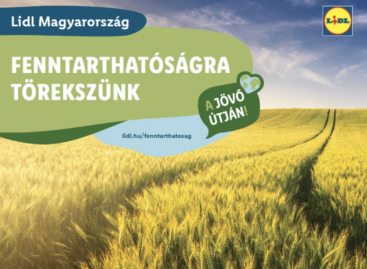International competitiveness needs to be strengthened in the meat industry
Hungarian meat consumption dropped shockingly in the last 25 years. For instance per capita annual pork consumption was 43kg at the end of the 1980s and it is only around 25kg now. Tamás Éder, president of the Hungarian Meat Industry Federation (MHSZ) informed that meat processing and preserving companies produced in the value of HUF 220-230 billion in 2015; together with product manufacturing this value was about HUF 300 billion. Production increased a little, mainly driven by export – more than one third of sales are realised abroad.
There are approximately 400 actors in the Hungarian pork and pork product sector, which is a bit too many. This is also one of the reasons why there is no Hungarian meat company that can be competitive in the international stage. With the exception of a few businesses capacity utilisation is at a low level in the sector. Mr Éder told that Hungarian meat companies are very much lagging behind from a technological perspective. It is a big problem that SMEs don’t even have a chance to get any funding for development purposes in the near future as the EU doesn’t prioritise this sector.
MHSZ believes that the biggest challenge ahead of the Hungarian meat sector is to become more competitive at international level. This is impossible without major technological development – and the same is true for meeting the requirements of multinational retail chains. An integration process is also inevitable if the sector wants to be more competitive. Reducing pork’s VAT from 27 to 5 percent from the beginning of 2016 has already proved to be beneficial. In the last 20-25 years pork and meat product consumption fell about 30 percent in Hungary. One of the main reasons behind this trend was that poultry used to be cheaper. At the same time it is also important to note that in the last few decades pork and pork products’ role in a healthy diet was questioned. In pork sales the share of pre-packaged meat is growing in Hungary, following the Western European trend; the same is true for pork products. Small-size products are more and more popular and there is also growing demand for special products (gluten-free, soy-free, organic, etc.).
The president informed that the Quality Hungarian Pork (KMS) trademark programme, which was introduced in 2014, had been developed and is run by the Livestock and Meat Interprofessional Organisation and Marketing Board (VHT). This trademark guarantees that consumers get top quality GMO-free meet, coming from pig born and bred in Hungary, raised in good conditions and fed with EU-approved, cereal-based fodder. VHT president Antal Németh told that already 1.5 million pigs and their meat earned the KMS certification, with more than 600 economic actors – from pig farmers to shops – forming part of the process. VHT’s experience is that like-for-like pork sales grew 15-20 percent in January 2016. In the first half of last year 2,215,000 pigs were slaughtered in Hungary, 12 percent more than in the first half of 2014; in the same period 48,900 cows were slaughtered, 10 percent more than in the base period. In January-June 2015 more than 12,000 sheep were slaughtered in Hungary – this constitutes a 17-percent growth from the first half of 2014. //
Related news
Related news
After a subdued year, the holiday season is strong
74% of online shoppers, around 3.1 million people, are preparing…
Read more >Lidl has published its 3rd sustainability report
Lidl Hungary’s sustainability report for the 2022/2023 business years has…
Read more >Battle of the regions: these are the most popular dishes according to Hungarians
Five times the national average of Mexican food is consumed…
Read more >





